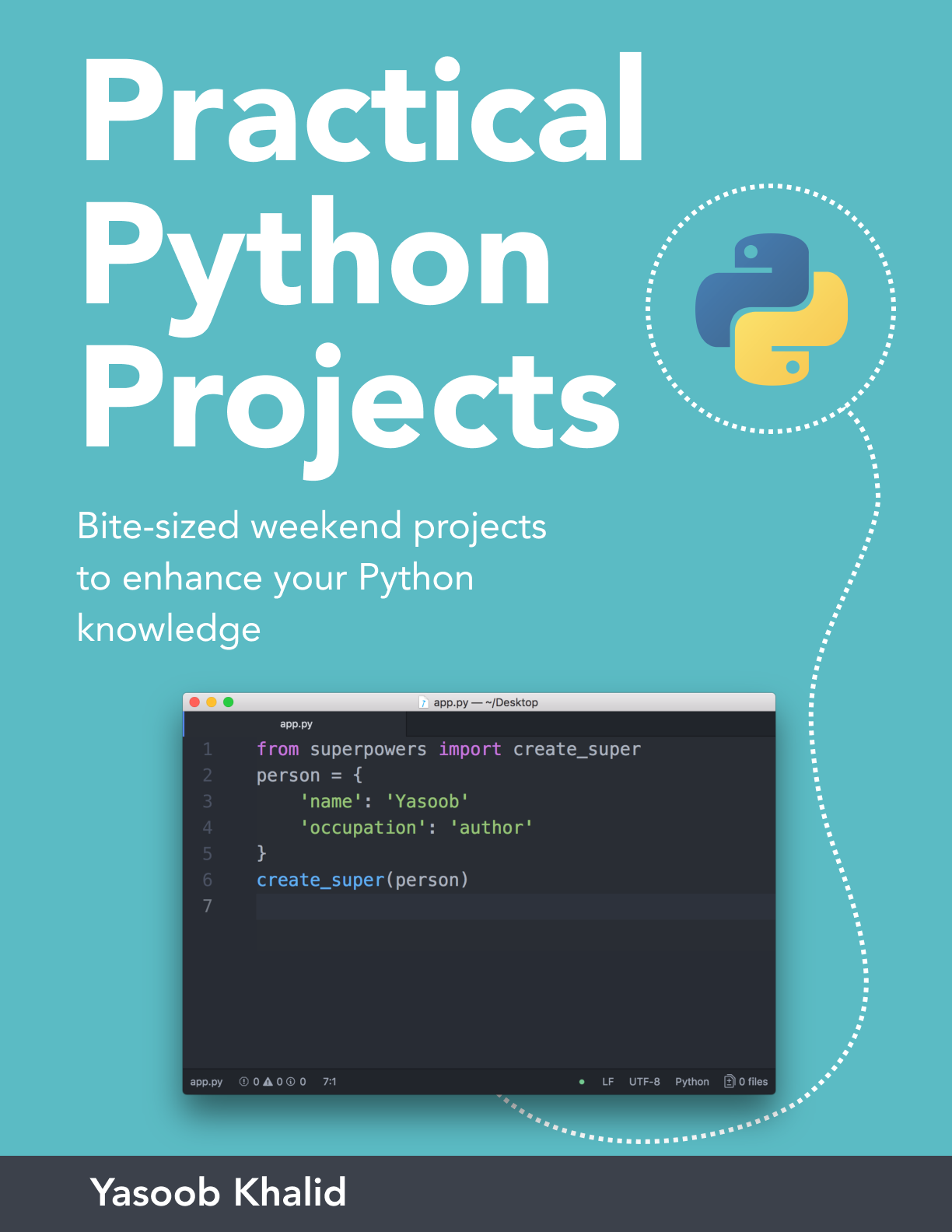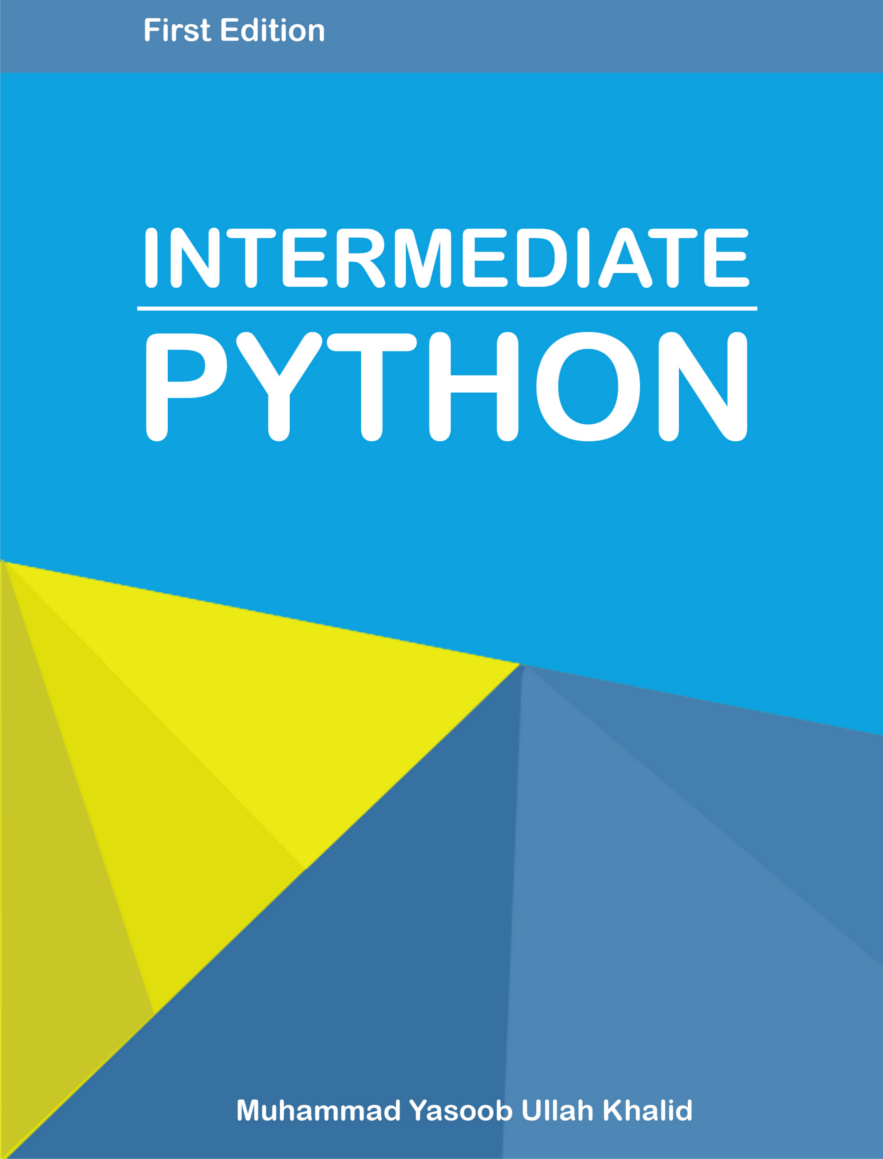Nifty Python tricks
Hi there folks. It’s been a long time since I last published a post. I have been busy. However in this post I am going to share some really informative tips and tricks which you might not have known about. So without wasting any time lets get straight to them:
Enumerate
Instead of doing:
i = 0
for item in iterable:
print i, item
i += 1
We can do:
for i, item in enumerate(iterable):
print i, item
Enumerate can also take a second argument. Here is an example:
>>> list(enumerate('abc'))
[(0, 'a'), (1, 'b'), (2, 'c')]
>>> list(enumerate('abc', 1))
[(1, 'a'), (2, 'b'), (3, 'c')]
Dict/Set comprehensions
You might know about list comprehensions but you might not be aware of dict/set comprehensions. They are simple to use and just as effective. Here is an example:
my_dict = {i: i * i for i in xrange(100)}
my_set = {i * 15 for i in xrange(100)}
# There is only a difference of ':' in both
Forcing float division:
If we divide whole numbers Python gives us the result as a whole number even if the result was a float. In order to circumvent this issue we have to do something like this:
result = 1.0/2
But there is another way to solve this problem which even I wasn’t aware of. You can do:
from __future__ import division
result = 1/2
# print(result)
# 0.5
Voila! Now you don’t need to append .0 in order to get an accurate answer. Do note that this trick is for Python 2 only. In Python 3 there is no need to do the import as it handles this case by default.
Simple Server
Do you want to quickly and easily share files from a directory? You can simply do:
# Python2
python -m SimpleHTTPServer
# Python 3
python3 -m http.server
This would start up a server.
Evaluating Python expressions
We all know about eval but do we all know about literal_eval? Perhaps not. You can do:
import ast
my_list = ast.literal_eval(expr)
Instead of:
expr = "[1, 2, 3]"
my_list = eval(expr)
I am sure that it’s something new for most of us but it has been a part of Python for a long time.
Profiling a script
You can easily profile a script by running it like this:
python -m cProfile my_script.py
Object introspection
You can inspect objects in Python by using dir(). Here is a simple example:
>>> foo = [1, 2, 3, 4]
>>> dir(foo)
['__add__', '__class__', '__contains__',
'__delattr__', '__delitem__', '__delslice__', ... ,
'extend', 'index', 'insert', 'pop', 'remove',
'reverse', 'sort']
Debugging scripts
You can easily set breakpoints in your script using the _pdb _module. Here is an example:
import pdb
pdb.set_trace()
You can write pdb.set_trace() anywhere in your script and it will set a breakpoint there. Super convenient. You should also read more about pdb as it has a couple of other hidden gems as well.
Simplify if constructs
If you have to check for several values you can easily do:
if n in [1,4,5,6]:
instead of:
if n==1 or n==4 or n==5 or n==6:
Reversing a list/string
You can quickly reverse a list by using:
>>> a = [1,2,3,4]
>>> a[::-1]
[4, 3, 2, 1]
# This creates a new reversed list.
# If you want to reverse a list in place you can do:
a.reverse()
and the same can be applied to a string as well:
>>> foo = "yasoob"
>>> foo[::-1]
'boosay'
Pretty print
You can print dicts and lists in a beautiful way by doing:
from pprint import pprint
pprint(my_dict)
This is more effective on dicts. Moreover, if you want to pretty print json quickly from a file then you can simply do:
cat file.json | python -m json.tools
Ternary Operators
Ternary operators are shortcut for an if-else statement, and are also known as a conditional operators. Here are some examples which you can use to make your code compact and more beautiful.
[on_true] if [expression] else [on_false]
x, y = 50, 25
small = x if x < y else y
Thats all for today! I hope you enjoyed this article and picked up a trick or two along the way. See you in the next article. Make sure that you follow us on Facebook and Twitter!
Do you have any comments or suggestions? You can write a comment or email me on yasoob.khld (at) gmail.com




GuieA_7
bilalahmedawan
In reply to GuieA_7
RavingNoah
Yash Bathia
tim
Gunther Klessinger
In reply to tim
Pawel
Ben (@deisum)
Joel
kaisk
Jim Mooney
Luk
itsmyalter
peacengell
Jay Mee
Mark Montgomery